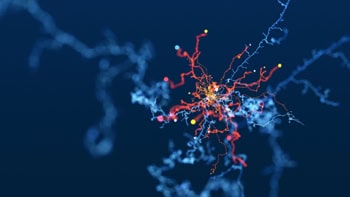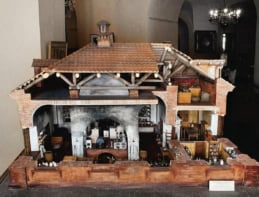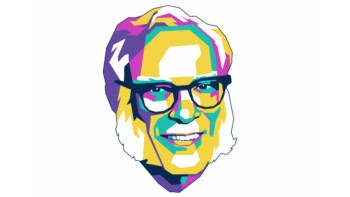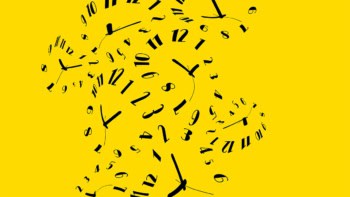Masters of Theory: Cambridge and the Rise of Mathematical Physics
Andrew Warwick
2003 University of Chicago Press 520pp £20.50/$29.00pb
From Newton to Hawking: A History of Cambridge University's Lucasian Professors of Mathematics
Kevin C Knox and Richard Noakes (ed)
2003 Cambridge University Press 512pp £27.50/$45.00
Beginning in the early 19th century, a series of reforms transformed Cambridge University, which had become a mathematical backwater in the 18th century, into a pre-eminent centre for mathematical physics. How the Cambridge “miracle” came to be lies at the heart of these two books, both of which have been written by professional historians of science. Based on good selections of primary and secondary sources, these are authoritative works that tackle current and significant historical issues, and also make important contributions to historical scholarship.
For the reader who is not a historian, however, both books pose certain difficulties. From Newton to Hawking is an edited volume that looks at the history of the Lucasian professorship in mathematics at Cambridge – from its establishment in 1663 to the present day. Each author deals with the life and work of one or more of the Lucasian professors, presenting admirably complete and balanced synopses of the relevant themes and events. However, the material is often not sufficiently explained or developed to be truly informative to the non-expert reader.
Another drawback is that, with individually authored chapters, the overall flow of the book is a bit choppy. Moreover, the chronology of the individual chapters is often a bit complex. Some readers may therefore find it hard to follow the thread of the story. Nevertheless, unifying themes do emerge, and the synoptic overview of three and a half centuries of the Lucasian professorship is highly worthwhile.
Masters of Theory has a tighter chronological focus, dealing mainly with the 19th and early 20th centuries, when mathematical physics flourished at Cambridge. However, it suffers from the opposite problem by offering perhaps a bit too much detail. Nevertheless, the motivated reader will discover a rich, deep and altogether fascinating historical reconstruction of a critical period. The book also benefits from the continuity and thematic control that can be achieved by a single author – Andrew Warwick – of great knowledge and skill.
Most studies of the rise of mathematical physics at Cambridge tie events to the “analytical revolution” of 1815-1825 when Charles Babbage, John Herschel, George Peacock and others introduced the Leibnizian approach to calculus into the Cambridge curriculum. This period is generally regarded as the dividing point between the desuetude of the 18th century, when science and mathematics at Cambridge languished, and the subsequent “miracle” of the 19th century.
Both books acknowledge this periodization – with some caveats – and develop it further in various ways. A strength of From Newton to Hawking is its illuminating treatment of the earlier, 18th-century period. With its emphasis on the politics of the Lucasian professorship, the book gives us a good understanding of how a pious Newtonianism came to dominate the Cambridge enterprise, leading to its isolation from larger currents in European science. Cambridge, for example, doggedly stuck to the “fluxional” approach to calculus, with its characteristic notation, and to the “central force” approach in mechanics, which explained phenomena ranging from chemical combination to celestial motions in terms of push-pull forces between particles.
The analytical revolution itself is better treated in Masters of Theory. The author pays particular attention to the circumstances and aspirations of the students and to the pedagogical techniques that were used to educate them. A central theme is the important contribution of “private teaching” at Cambridge by various tutors and coaches, which helped mathematical physics to flourish. This climaxed with Edward Routh, who was the most influential and productive coach from the 1860s to the 1880s.
Also important was the exam system in the form of the mathematical tripos. It led to a positive-feedback loop in which the tripos drove the coaching and the coaching drove the tripos. The loop was reinforced by the students’ desire to do well in the tripos for the enhanced social standing that such success would bring.
Masters of Theory also shines light on the development of Maxwell’s theory of electromagnetism. His Treatise on Electricity and Magnetism has always been a bit of a puzzle, comprised as it is of pieces that do not quite fit together. The key is to see how the book was related to Cambridge pedagogy, and how it was studied and developed at various Cambridge sites, including the “coaching rooms”, the intercollegiate lectures of W D Niven at Trinity College, and the Cavendish Laboratory. This helps one to understand the purpose and structure of the book. The pedagogical perspective also sheds light on the further development of Maxwellian theory by J J Thomson, J H Poynting, Joseph Larmor and others.
A final theme is how special and general relativity were received by scientists at Cambridge, which brings the story up to the 1920s. The interaction of Cambridge traditions with the novelties of the 20th century is also central to From Newton to Hawking, which takes the story further to Stephen Hawking’s professorship and the present day.
Reflecting current trends in the history of science, both books argue against traditional claims for the universality of science, emphasizing instead how time and place set the tone and agenda for scientific endeavour. Nevertheless, both books furnish strong evidence of continuity and universality: academic readers will find that the politics of university life described in From Newton to Hawking are still in evidence today; scientists – especially physicists – will recognize the competitive atmosphere of 19th-century Cambridge described in Masters of Theory. It is the interplay of the universal and the particular that engages our attention in a variety of narrative forms, and the history of science is no exception.
Both of these books, with their particular strengths and weaknesses, deserve to be in any serious library and to be consulted by anyone with an interest in the history of mathematical physics at Cambridge.




